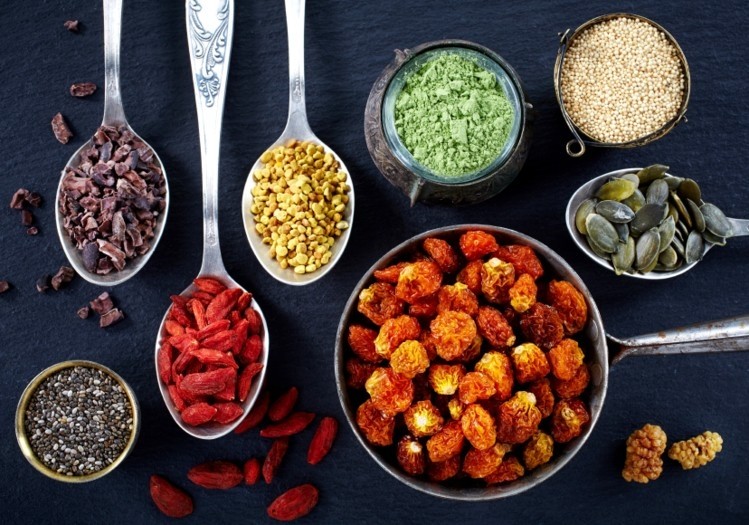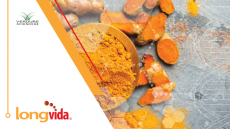‘Crop diversity underpins food security’: Scientists flag ‘enormous’ diversity loss

An international team of scientists have completed what they claim is the ‘largest review ever conducted’ looking at agricultural crop diversity. The results are in: we are seeing ‘enormous’ diversity loss, with implications for future food security.
Scientists have been issuing warnings about the decline in crop diversity for more than 100 years. A recent report from WWF found that 75% of the food humans consume comes from just 12 plant sources and five animal sources, with three crops making up 60% of the plant-based calories in the entire human diet.
Since 1900, FAO figures note 75% of the genetic plant diversity in agriculture has been lost. In Thailand, for example, the 16,000 rice varieties once cultivated have dropped to just 37.
Crop diversity is a critically important resource for agriculture and for human nutrition. This diversity keeps crops productive as they face pests and diseases, provides resilience during extreme weather and other shocks and offers the potential to adapt to changing climates and meet new market demands.
Repeatedly harvesting the same crop on the same land depletes nutrients in the soil, typically necessitating a higher use of fertilizers and pesticides, which damage the environment.
But questions have remained about the magnitude, causes and significance of this genetic loss.
A ream of 15 scientists from various international research centres and universities set out 18 months ago to find answers to some of these persistent questions. Together, the have completed the ‘largest review ever conducted’ of evidence in changes to crop diversity overtime worldwide.
The team examined hundreds of primary literature sources published over the last 80 years to evaluate crop diversity loss, or ‘genetic erosion’. The global collaboration found 95% of all studies reported diversity change, with almost 80% carrying evidence of diversity loss.
Why are we seeing genetic erosion in agriculture?
The review, published in journal New Phytologist, found economic, technological, climactic and political changes over the last 100 years have combined to lead to the decline disappearance of genetic diversity that, the researchers said, is important to agriculture. This decline can be seen in both cultivated fields and wild habitats, the noted.
Significantly, the research stressed, the remaining global crop diversity continues to face the threat of erosion or extinction, with crop genetic diversity becoming ‘more homogenous’ across local landscapes internationally.
“The global picture that emerges from our review is that of enormous loss over a relatively short period of time of traditional agricultural diversity, which was nurtured by many cultures around the world over the last 10,000 years,” said lead author Colin Khoury, Senior Director for Science and Conservation at San Diego Botanic Garden and research scientist at the Alliance of Bioversity International and the International Center for Tropical Agriculture (CIAT). “Yet the picture also provides hope, as considerable crop diversity persists, and because it shows that agriculture can be re-diversified.”
The opportunity to ‘re-diversify’
Khoury collaborated with scientists at international and national agricultural research centres in the USA, Colombia, Germany, Italy, Mexico, and Peru, as well as universities including El Colegio de la Frontera Sur (Chiapas, Mexico), Ohio State University, Saint Louis University, the University of Arizona, the University of California at Davis, the University of Cambridge, and the University of Illinois to carry out the study, ‘Crop genetic erosion: understanding and responding to loss of crop diversity’.
“The magnitude of crop diversity loss we have seen in some regions of the world underscores the importance of conserving this diversity outside of these ecosystems as well as within them,” said Luigi Guarino, Director of Science at the Crop Trust, and one of the study’s authors.
“Collections of crop diversity such as those in agricultural genebanks and botanic gardens can mitigate local and regional losses, enable the future reestablishment of diversity on farms, and preserve the availability of crops for future use by all. We need to strengthen these repositories and duplicate unique collections in other locations to insure against the risk of loss,” he said.
There are approximately 1,750 genebanks worldwide, maintaining over 7m samples of crop diversity, with botanic gardens, universities, nonprofits, community seed banks, and local conservation networks further contributing to ex-situ conservation.
However, the researchers argue, more work is needed to conserve the full range of diversity at risk of disappearing from farmers’ fields and, in the case of crop wild relatives, the wild progenitors and cousins of cultivated plants, from grasslands, forests and other natural habitats.
Diversity remains high where varieties are valued
The study analysed the change in the diversity of traditional crop varieties cultivated on farms, of modern crop cultivars in agriculture, of crop wild relatives in their natural habitats, and of crop genetic resources held in ex situ conservation repositories. The extent of change over time in these environments, while considerable, varied by crop, location, and analytical approach. And the researchers did note that some contexts were more supportive to genetic variety.
“The good news is that while we found evidence of enormous diversity loss over the past decades in each of the environments we studied, we also saw significant maintenance of that diversity in some contexts, and even marked increases in specific instances,” said Stephen Brush, second author for the study and Professor Emeritus of Human Ecology and former Master Adviser for International Agricultural Development at UC Davis.
Diversity of traditional crops remains high on farms and in gardens where they are valued for their ‘unique agricultural and societal uses’. One-third of the 139 studies of changes in traditional crop varieties reported the maintenance of diversity over time, and almost one-quarter found evidence for the appearance of new diversity.
In addition, crop breeders have made ‘significant strides’ toward diversifying modern crop cultivars in recent decades, the review noted.
“For crop diversity to continue evolving alongside pests and diseases, in response to climate change, and to meet demands for improved crops that provide both economic products and ecological services, we need to redouble support for conservation efforts in situ, or in the field, as well as ex situ,” suggested co-author Allison Miller, Member and Principal Investigator at the Danforth Plant Science Center and Professor of Biology at Saint Louis University.
“In reviewing global change in the crop diversity that underpins everyone’s food security and nutrition, it’s obvious that there has been major loss, but also that the tools, methods, and knowledge exist to stop its further erosion,” concluded Khoury. “It is a matter of priorities and resources. To go a major step further and start to reverse the diversity trend, though, is a much bigger task. It requires no less than reframing our food systems, and even the societies they nourish, as diversity-supportive processes.”
Source
Crop genetic erosion: understanding and responding to loss of crop diversity
New Phytologist











